What settings are needed for windows 10
The relatively new “OS” Windows version 10, which became available for download and installation at the end of July 2015, caused unprecedented excitement and at the same time a lot of discussion about its perfection and the feasibility of installing it. However, the minimum requirements for Windows 10 in terms of computer systems, more precisely, hardware, do not look too high, as one might expect.
What are system requirements?
Before considering the issue regarding Windows 10, first let's define what the very concept of "system requirements" includes. The simplest interpretation of this term is the description of the expected set of characteristics of the hardware segment (in other words, “hardware”), which includes the main components of a computer or smartphone, which must have certain characteristics and parameters, and such that they can support the work software environment(in our case, the operating system is Windows 10).
In other words, the Windows 10 requirement is about the processor (number of cores, clock speed), RAM (type, amount), video adapter (type, amount of allocated memory, frequency of the integrated graphics processor, support for a specific version of DirectX), display (type, resolution, support additional features), hard drive(sufficient free space for copying OS files), etc. That is, we are talking about the “iron” filling, which is located inside a computer, laptop, tablet or smartphone.
The concept of system capacity
When installing the latest "OSes" from Microsoft, one should take into account the so-called system architecture, which is directly related to the same processor or RAM.
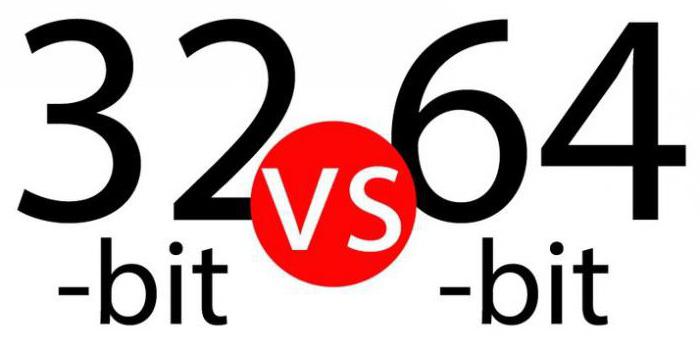
Today there are two types: 32 bits (referred to as x86) and 64 bits (referred to as x64). The difference between them is quite serious. The most important difference is that 32-bit systems support the installation of RAM sticks of up to 4 GB (in fact, the system "sees" about 3 GB, and even then not always).
That is why if you want to use the "RAM" to the maximum (if it is more than 4 "gig"), installing a 32-bit version of Windows 10 does not make any sense. Although the system itself seems to be the most modern, nevertheless, as they say, “squeezing out” everything that it is capable of in terms of performance from a computer will not work in any way.
File systems
Considering the system requirements for a computer, one cannot ignore the concept of file systems. Today, the most common are FAT32, NTFS and the relatively recent ReFS. IN mobile systems ah more used exFAT.
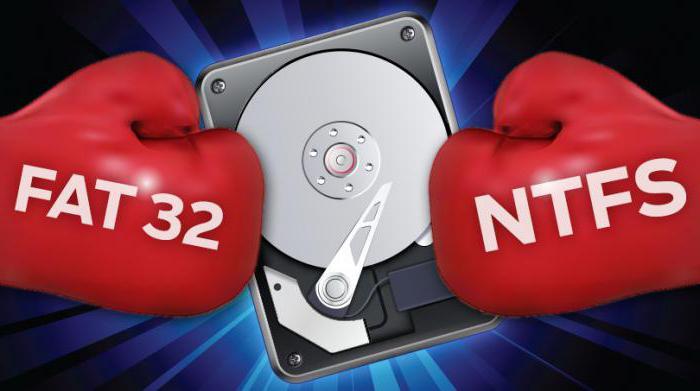
The main thing here is that FAT32 has a larger one for storing small data, but when accessing heavy files, the rotation of the hard disk slows down. When using NTFS or ReFS, access to large files is much faster, and the speed of reading data from hard drive sectors does not decrease.
In addition, it should be noted that the installation requirement for Windows 10 is such that, for example, a 32-bit version of the “OS” can be installed in the NTFS file system, but a 64-bit version in FAT32 will not work. You will have to format the disk or partition. By the way, the same applies to the installation Windows versions below ten.
Required system requirements for Windows 10 Technical Preview
As you know, initially the "ten" was available only in the form of a Technical Preview, which was an upgrade of the existing OS to version 10.
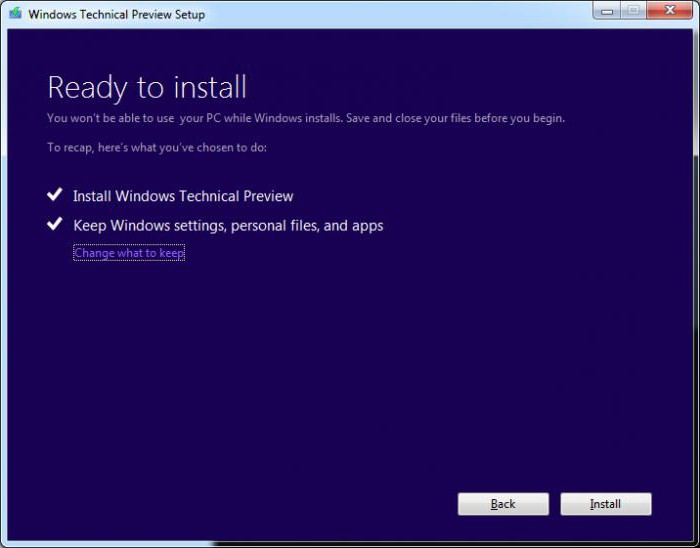
At the same time, not paying attention to the general “iron” configuration for the time being, for Windows 10 the requirements were reduced to one main condition - the presence of all installed service packs and service packs of the existing system. That is, at first it was necessary to install all uninstalled updates, and only then proceed to download the distribution kit, followed by the installation of already "dozens". In addition, the update is only possible on systems starting with the seventh version. Vista and XP do not support this upgrade.
Windows 10 Standard Types: Minimum System Requirements
Over time, the first version of the system was withdrawn, and standard versions such as Home, Pro, Enterprise, etc. appeared instead.
Actually, the minimum requirements for Windows 10 of any version are practically the same. It all depends on the chosen architecture. In any case, the minimum requirements for Windows 10 with 32 and 64 bit architectures are as follows:
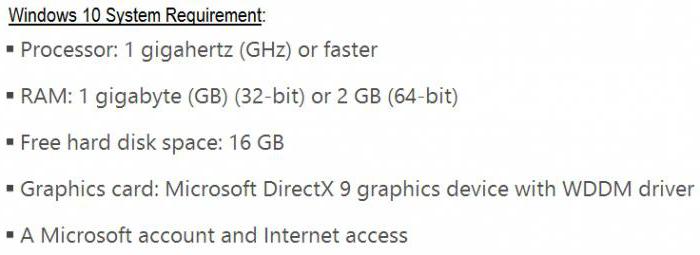
As you can see, nothing supernatural.
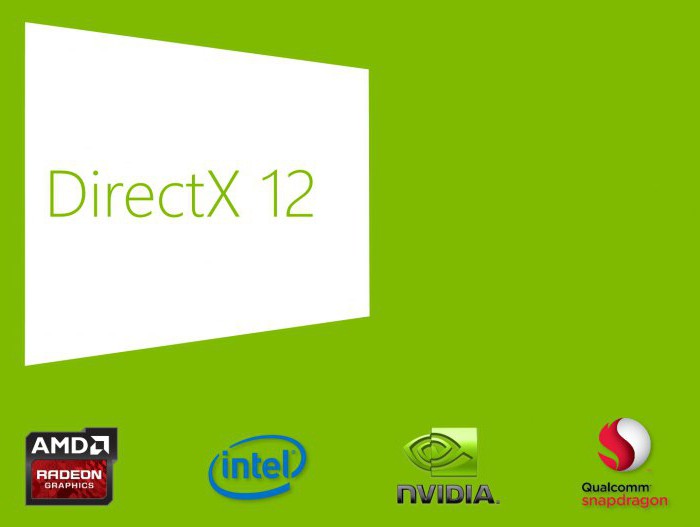
Despite the fact that the “ten” can easily work in obsolete computer systems, nevertheless, in order to use its capabilities to the maximum, it is desirable to have
higher hardware settings. Most often this applies to processors and graphics chips, which must have mandatory support. latest version DirectX 12.
Processors are more difficult. Typically, systemic Windows requirements 10 to multi-core platforms do not play a special role. Rather, the problem here is how to use all the cores to optimize performance. But this is a separate topic for discussion.
Additional requirements to access some features
Separately, it is worth mentioning what the specialized system requirements of Windows 10 (x64 or x32) are. But they mostly concern the functioning of certain specialized services. Some of them in different versions may not be available, some may only work in certain regions (for example, Cortana - only in the US, Britain, several European countries and China).
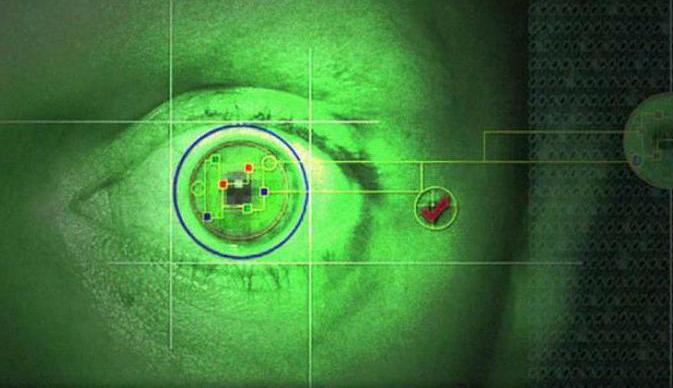
Requires a microphone to recognize voice commands High Quality with a set of appropriate drivers, to use the Hello service - an infrared camera with a backlight capable of analyzing the iris of the eye, to scan fingerprints - the appropriate built-in module, to switch to tablet mode, you need an appropriate monitor or screen that supports multi-touch function.
In some cases, in Windows 10, the requirements are reduced to having an activated account Microsoft. Secure Boots will require a Microsoft Center certificate and software with UEFI v2.3.1 Errata B support.
To use BitLocker, for example, for Windows 10 (64), system requirements may be reduced to the mandatory presence of a USB device and the so-called trusted TPM version 1.2 or 2.0. Enabling Hyper-V mode is performed only on the basis of a 64-bit system with the mandatory possibility of address translation SLAT (second level).
When installing the same 64-bit system, the processor must support SAHF/LAHF, PrefetchW and CMPXCHG16b technologies.
When it comes to using the Miracast function, the Windows 10 requirement boils down to the following: you must have a graphics chip that supports the installation of a WDDM driver (Windows Display Driver Model) and an adapter wireless communication with Wi-Fi Direct support. By the way, the same applies to Wi-Fi printing of documents.
Using the InstantGo module implies the presence of a connection standby mode, which is not present in all computer systems. By the way, the Windows 10 requirement for the presence of the InstantGo module plus support for TPM 2.0 (not lower) is a prerequisite for encrypting the device or terminal itself. In general, as you can see, there are enough hidden requirements. And not all of them have been described yet.
What else do you need to know?
It should be added that many users unknowingly consider 8, 10 versions to be absolutely identical. This is a clear misconception. Perhaps the system requirements of Windows 10 and Windows 7 (or 8) are very similar in terms of the hardware configuration used, but this is not entirely true.
This is due only to the fact that the "top ten" has a very large number of additional and often hidden features, and using them without some prerequisites is simply impossible. Of course, there are also enough of them in the "seven" and "eight", however, with the tenth version of Windows, they, as they say, did not stand next to each other. Here the question is different - how much will all these additional modules be in demand among the average user, and in general, is it worth using them?
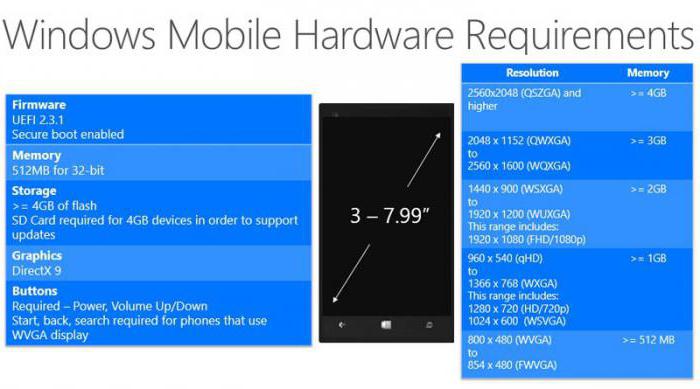
As for mobile technology, the “ten” is also not too picky about these gadgets. But here there is a direct relationship between the diagonal and the screen resolution, on which the minimum amount of RAM depends. In other words, the graphic component plays the leading role here. Of course, it is desirable to have powerful processor, say, at least four cores, but this is not a prerequisite. There are no problems with permanent memory either - only 4 GB.
Conclusion
In general, as is clear from the above, in Windows 10 the minimum system requirements are not too high (neither for the desktop version, nor for mobile). Another thing is that access to some functional features new system limited only because something is missing, something does not support such and such a function, or has underestimated characteristics and parameters. But in general, in most existing computer and mobile systems, the "ten" can be installed and used without any problems, even with a minimal configuration.
Microsoft has never been known for humane requests for PC hardware. Unlike Linux, which is installed on even the smallest computer, the system requirements of Windows 10 are quite high.
What are the system requirements for Windows 10?
First of all, they are affected by the graphical shell and new features. 10 was developed in accordance with new developments in the field software. All its features are provided by high hardware performance.
Although ten is claimed to be a more economical operating system than 7 or 8, it is gradually overgrown with updates that consume more and more resources. For all the new products announced in it, RAM, hard drive space and processor speed are required.
Narrator will speak too slowly, Cortana will be annoying with delays in executing commands, and Movie Maker will constantly freeze if your computer does not have the highest performance.
Basically, you have to pay for everything. With only the minimum system requirements of Windows 10, you won't get high speeds and lightning-fast performance. Do not forget about additional programs, which are inevitably installed on any PC.
Minimum system requirements for Windows 10
So, what indicators should your computer have in order to install the 10th version? It all depends on the level. The minimum system requirements for Windows 10 32 bit are:
- Processor 1 GHz.
- RAM 1 GB.
- Hard drive capacity 16 GB.
- DirectX video adapter from version 9, WDDM 1.0 driver.
- Monitor with a resolution of 800x600.
System requirements for Windows 10 x64 bit add another 1GB to the RAM and hard drive.
Keep in mind that users of the Home version receive updates automatically, which means that the hard disk space must exceed the minimum. Otherwise, you will continuously, under the strict guidance of the OS, clean it by removing junk files. Or you will have to use a flash drive to which additional files will be downloaded.
Experienced users multiply the indicators by two. And judging by Microsoft's notes, this will not be enough. Windows 10 system requirements for a laptop are completely the same as those for computers.
How to find out your system requirements for installing Windows 10
As far as your computer is suitable for installing Windows 10, you can before starting it. The installer will analyze your hardware and let you know if you have enough resources.
You can find some parameters in the system properties. Right-click on the desktop icon "This PC" and select the last item.
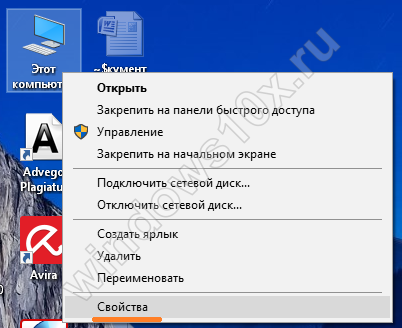
In the properties window, you will learn about RAM and processor.
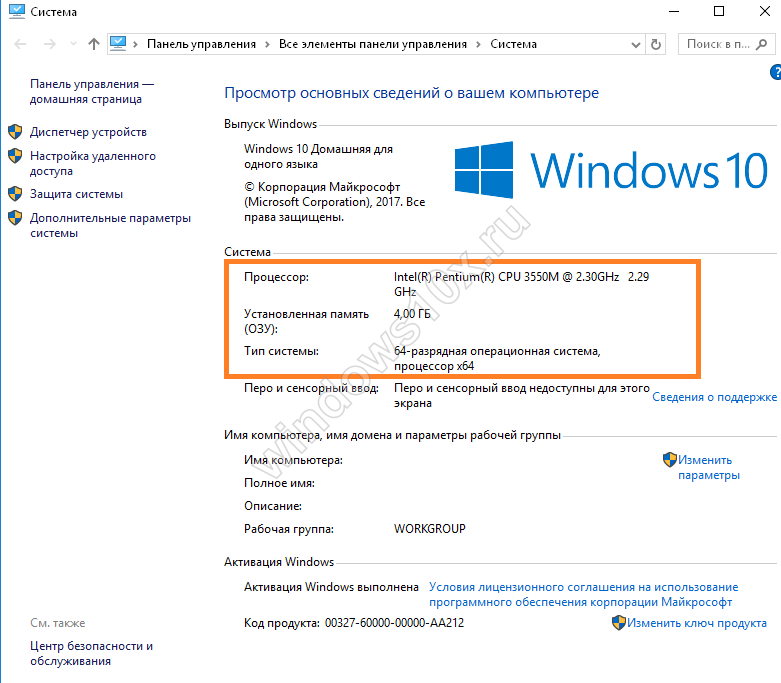
The capacity of the hard drive can be found in the explorer. Right-click on the label of the disk with the installed OS and select properties.
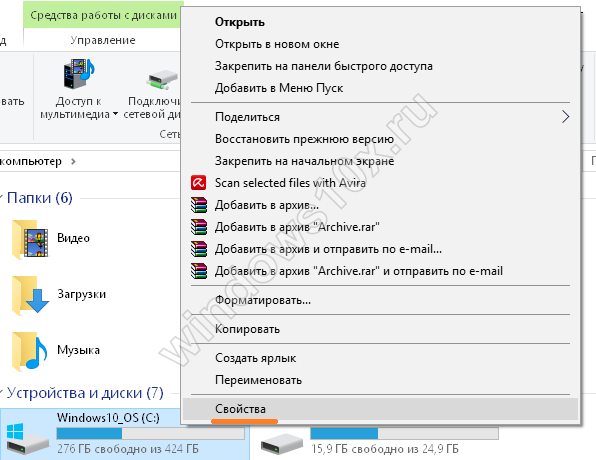
Look at the values.
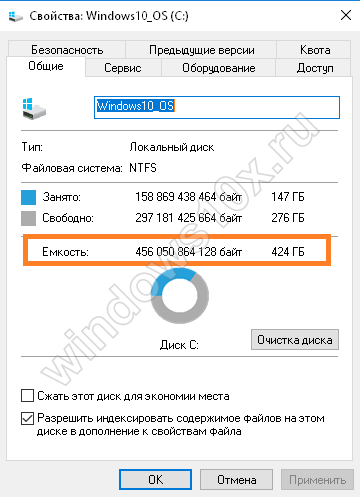
To find out everything along with video indicators, use the dxdiag utility. Press WIN+X and enter the command.
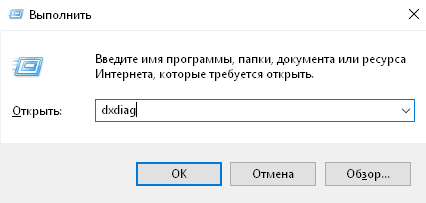
In the window you will see absolutely everything specifications your PC.
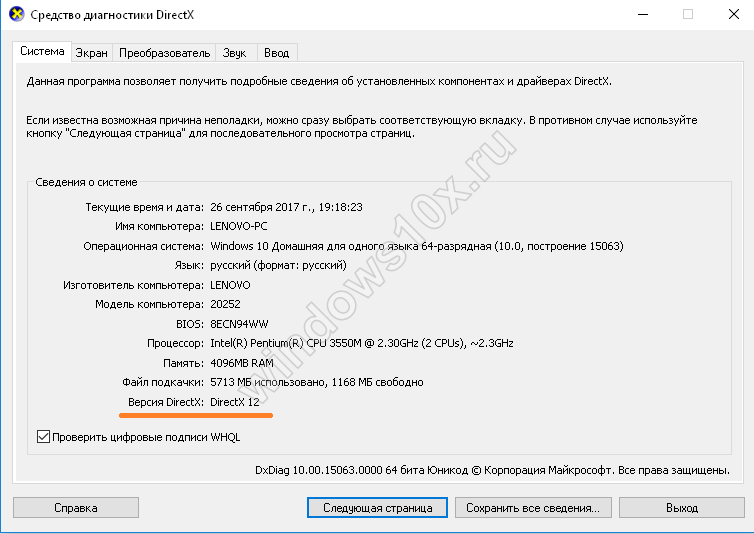
If your PC has normal settings for Windows 10, but the OS is still very slow and does not work correctly, you may have problems with the registry. Read and brush it.
Windows 10 is the latest operating system from Microsoft. The OS was first released in the fall of 2014 and has since undergone many changes, both functional and external. At the moment, the latest version is the Fall Creators Update. Ten brings together desktop computers and mobile devices due to its versatility and ease of use, both with the help of classical input devices and touch screen.
Below you will find out everything that every user needs: system requirements, distinguishing features, existing versions, ways to upgrade and much more. useful information. All the data presented in the article is fully consistent with the information from the developers' website.
As before, the OS from Microsoft is not too demanding on computer resources. The configurations differ slightly depending on the 32-bit and 64-bit versions.
Let's highlight the minimum requirements for running a computer on Windows 10 for 32-bit versions:
- processor 1 GHz or more;
- 1 GB of RAM;
- video adapter with the ability to support DirectX 9 and higher;
- 16 GB free space on a hard drive;
- screen with a resolution of 800 by 600 pixels minimum.
For a 64-bit OS, the requirements differ only in the increased amount of RAM up to 2 GB at least and 20 GB on the hard disk for system files.
- processor with 1 GHz frequency and higher;
- 4GB of RAM for 32 and 64-bit versions;
- 16 GB and 20 GB for installing 32 and 64-bit OS, respectively;
- minimum resolution 800 by 600 pixels;
- support for DirectX 9 and above.
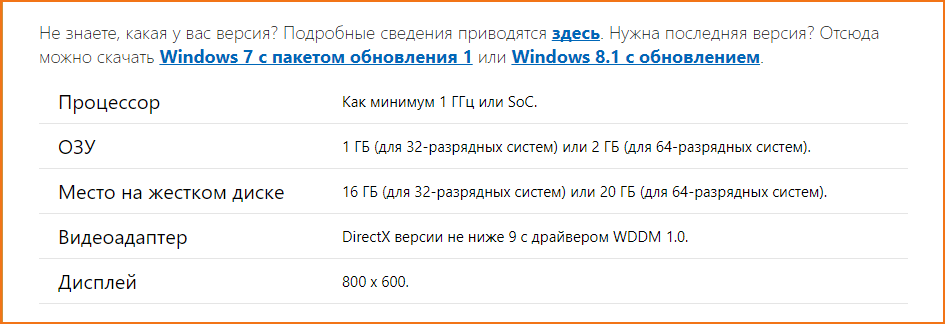
May vary depending on your device. necessary equipment to enter information. For personal computers and laptops - this is a keyboard and mouse / touchpad. For touch tablets and laptops, this is the screen. You can always track official information about equipment requirements on the official website.
Additional requirements
In addition to the basic requirements for hardware, you must consider the presence of some components and capabilities for a full-fledged work. operating system. For example, in English versions of the OS, a supported microphone is required to activate voice assistant Cortana. Windows Hello only works with a dedicated infrared camera for facial recognition. All apps require a Microsoft Store account and Xbox Live. Full list can be found on the official website at the link.
What bit depth to choose
Let's consider the main differences and the concept of the bit depth of the system, without going into technical details, but focusing on what will be important to the average user.
Bit depth is the ability to process commands by the processor in a certain bit mode. In technical terms and from the hardware side, 64-bit operating systems and processors work much faster and solve more tasks per unit of time, unlike 32-bit ones.
However, for the average user, the differences are not so noticeable. First, bit depth changes the maximum amount of RAM. For a 32-bit OS, this value is 3.75 GB, and for a 64-bit OS, this value is more than 4 GB. Secondly, old hardware and software do not support modern 64-bit programs and hardware. Thirdly, x32 OS can only work with 32-bit programs, while x64 is compatible with 32 and 64-bit applications.
Accordingly, choosing the right bit depth depends on your needs and equipment. If we are talking about an old PC with a small amount of memory, which is used for simple tasks (Internet, office programs), then a 32-bit operating system would be appropriate. If the OS is selected for a computer with a modern processor, a large amount of RAM, then install x64.
Many are concerned about the question: which version is better for games? If we are talking about undemanding projects and games released 5-6 years ago, then the difference will not be noticeable - they all require no more than 4GB of RAM.
Modern games often run only on Windows 10 x64. A prime example is the Forza Horizon and Motorsport series. If you are a fan of Microsoft games, then the 64-bit version is a must for you. For Sims 3 or Sims 4 games (as well as similar ones), 32 bits are also suitable (from official system requirements).
How to view bit depth
To check the bit depth of the installed "tens", you need to perform the following steps:
- Right-click on the "This PC" shortcut on the desktop and select "Properties".
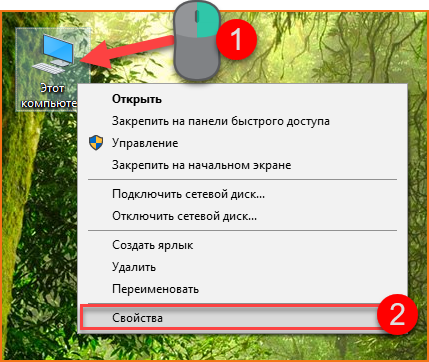
- In the line "System Type" you will see the corresponding inscription.
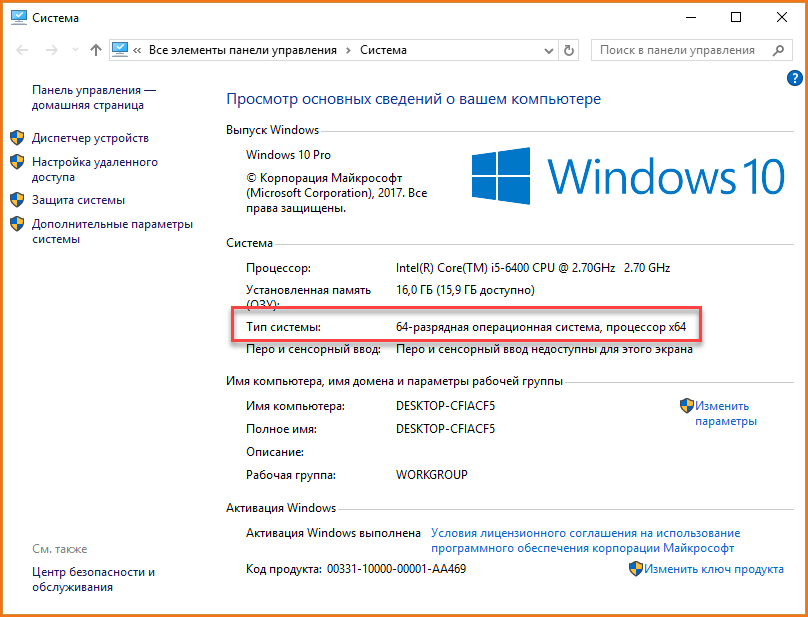
- If you have a 32-bit assembly, but want to upgrade to 64, then you need to check if your processor supports this bit depth. To do this, open the "Run" window using the combination Win + R and enter the command "cmd", then press Enter.
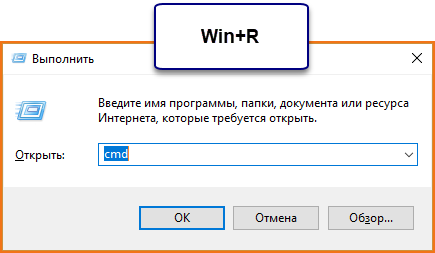
- IN command line type "set" and press Enter.
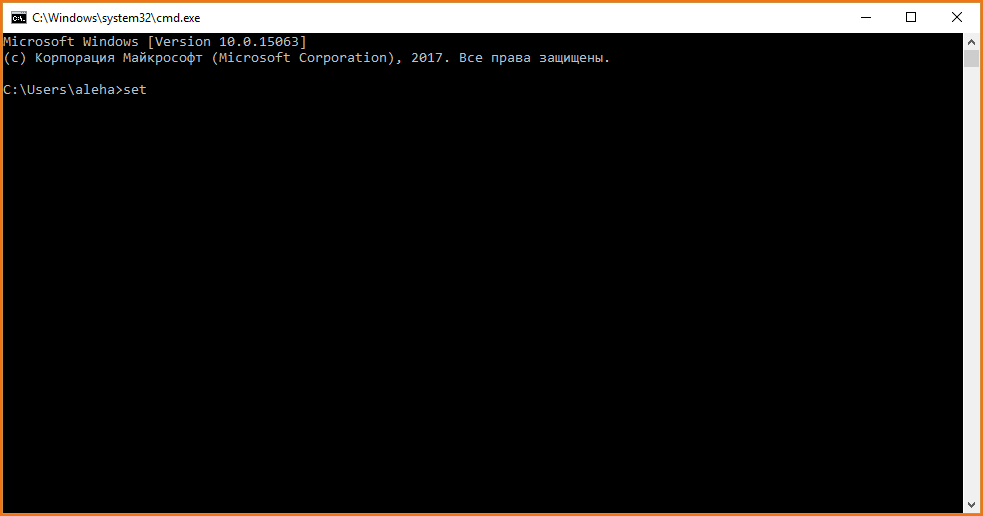
- On the screen you will see information regarding hardware and software. The line "PROCESSOR_ARCHITECTURE" must be written x64 or AMD This means that your processor supports 64-bit systems.
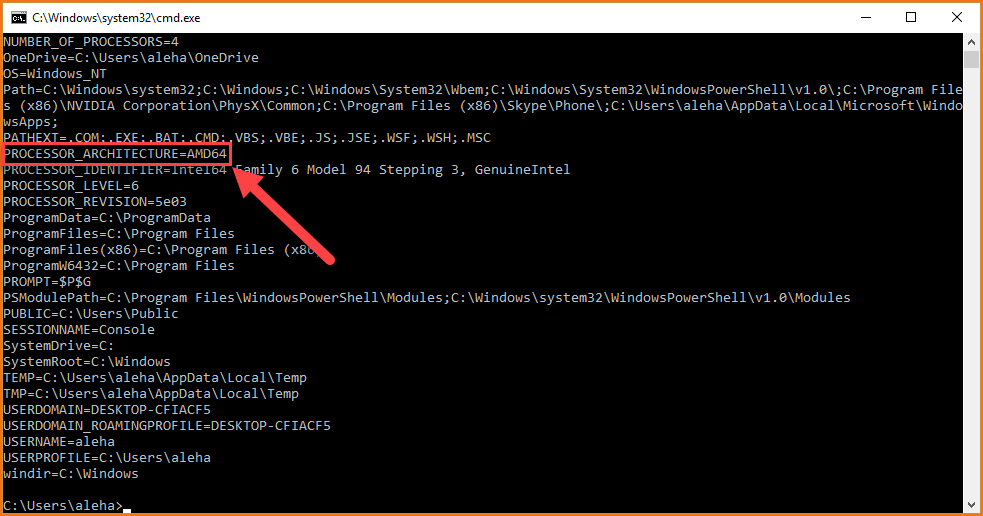
Now you know how to choose the correct bit depth and what it affects. Let's move on to the choice of assembly.
Assembly
The first working version of Windows 10 was the Technical Preview. It was created not for everyday use, but for testing and showing to the public. It does not make sense to install the Technical Preview build now, as it is full of bugs, flaws, and it lacks most of the current features.
The latest release of the OS is the Fall Creators Update, released in 2017. Until mid-summer 2016, Microsoft was giving away licensed copies of the "dozens" for free. However, you can still install official version from the developer site. Free distribution continues under Windows view 10 for people with handicapped. To download it, you need to go to the link and download the Windows 10 installer.
How much does the installed OS weigh
The size of the operating system will depend on the version you choose. Main current versions tens are listed below:
- home. Basic version installed on laptops and laptops;
- professional. Supports small business features;
- corporate. The version has advanced functionality for business and increased security.
To find out how much your system weighs, follow these steps:
- Go to the system partition of the hard drive.
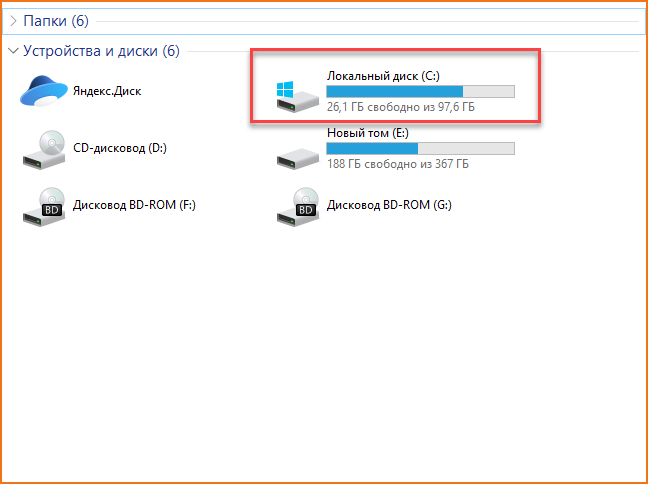
- Right-click on the "Windows" folder and select "Properties" from the menu.
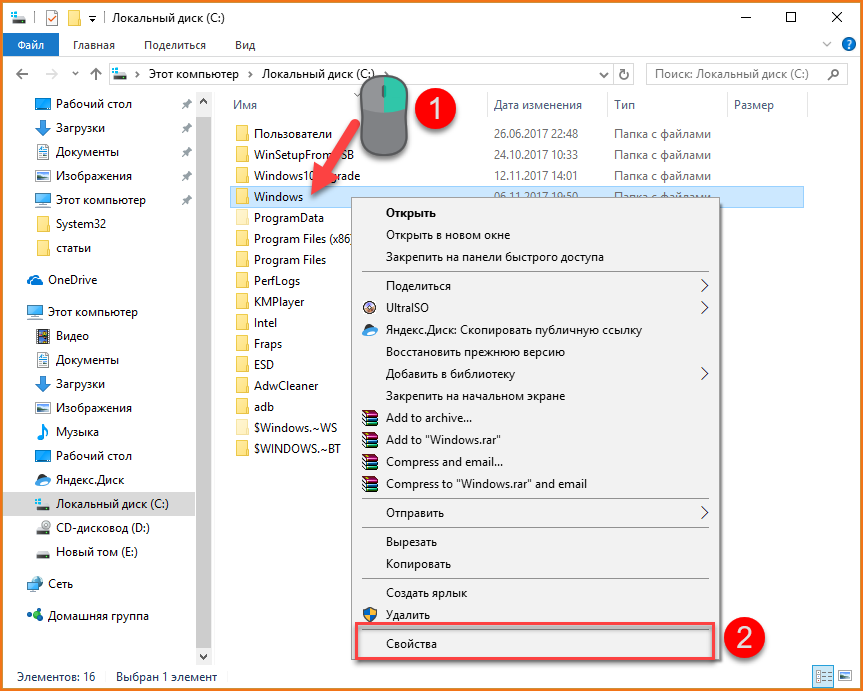
- In the "General" tab, you will see the size of the operating system on the disk.
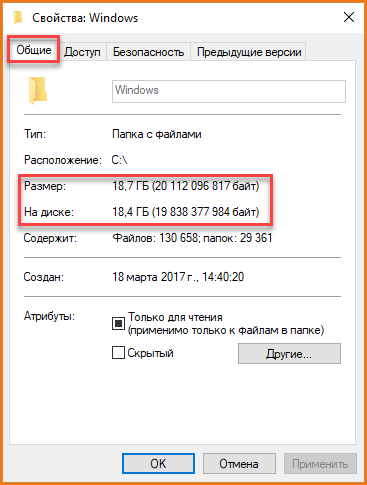
How much memory is needed for the system partition
When allocating hard disk space, it is important to consider the possibility of installing OS updates, third party programs and swap file. Therefore, it is not recommended to create a 16 or 20 GB system partition as specified in the system requirements. Be sure to leave free space in the amount of 15-20 GB at least. So you will not run into a problem when you do not have enough hard disk space to install software.
File systems
Default when Windows installation 10 creates a partition with file system NTFS. However, all the latest versions of the "dozens" already support ReFS, which is characterized by increased reliability, high speed work with a large amount of information and the possibility quick recovery data. ReFS will be useful for those who store a large number of large files on their hard drives. The FS itself will take approximately 700 MB on the drive. Format HDD in ReFS you can standard means operating system:
- Right-click on the non-system partition of the hard drive and select "Format".
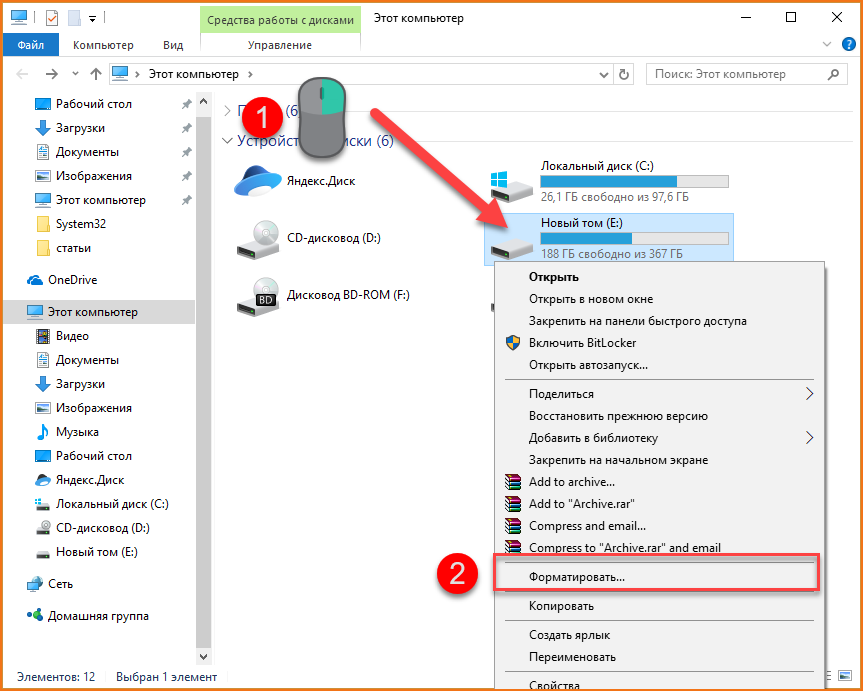
- In the line "File system" set ReFS.
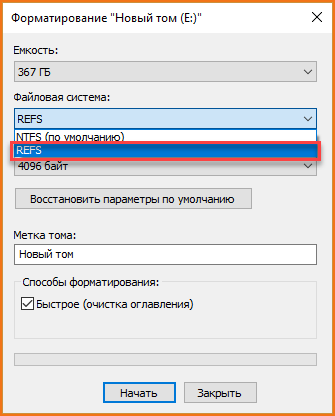
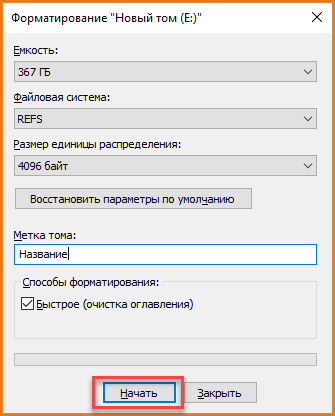
As a result, you will get a completely empty partition with the ReFS file system. In the near future, it will be possible to use this FS on the system partition of the hard drive.
Downgrading from a previous version of Windows
If you do not want to completely reinstall the operating system, then use the update tool. For this:
- Open the page. Click the Update Now button.
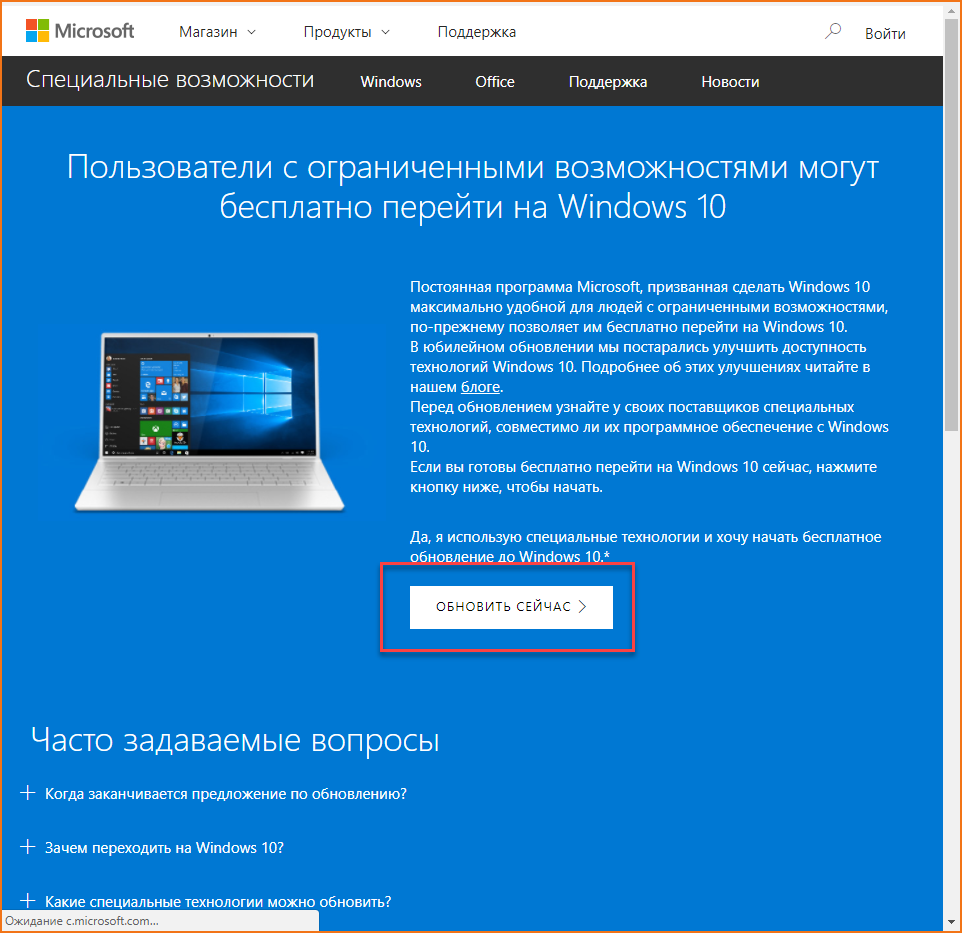
- Launch Windows 10 Upgrader.
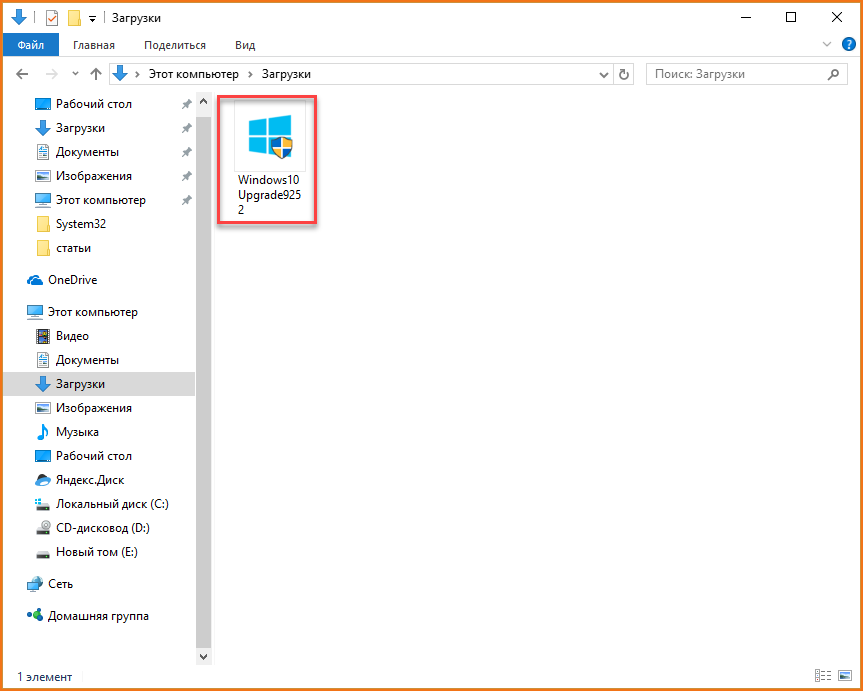
- After scanning, the program will prompt you to download the latest OS version. To agree, click on "Update Now".
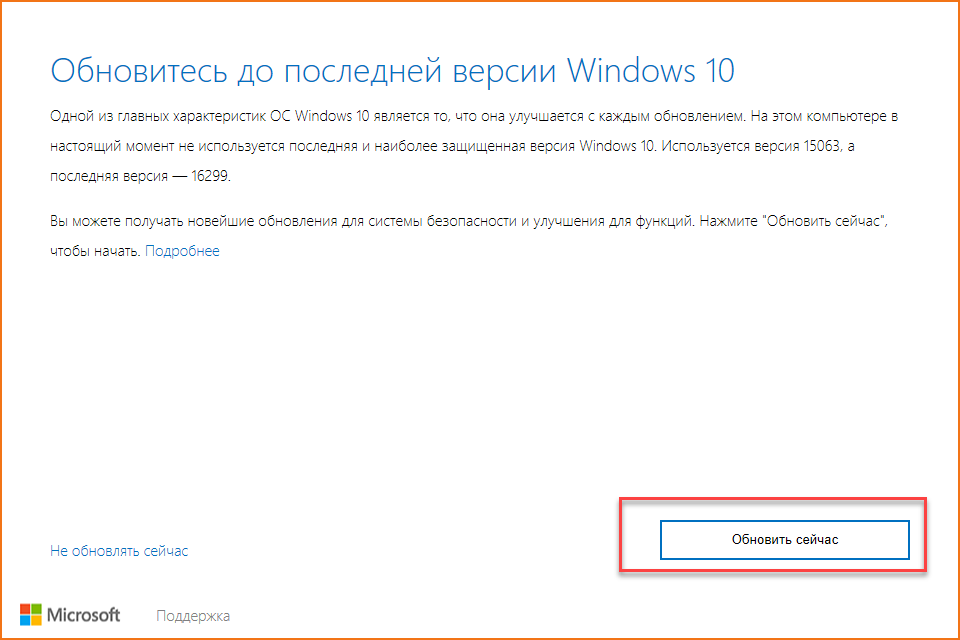
With this utility, you can find out if your OS supports the transition to Windows 10. The matrix of updates to the "ten" looks like this:
| Windows 7 | Home, Home Basic, Home Premium, Professional, Ultimate |
| Windows 8 | 8.1, 8.1 with Bing, 8.1 Pro |
| Windows phone | Phone 8.1 |
All systems shown in the table are upgradeable toWindows10 without a full reinstall.
Comparison with previous OS
In addition to innovations and various chips, there are functions that are no longer available in the top ten. We list the main changes that will affect the average user:
- removed "Viewer";
- removed Media Center;
- Changed the panel and menu "Start";
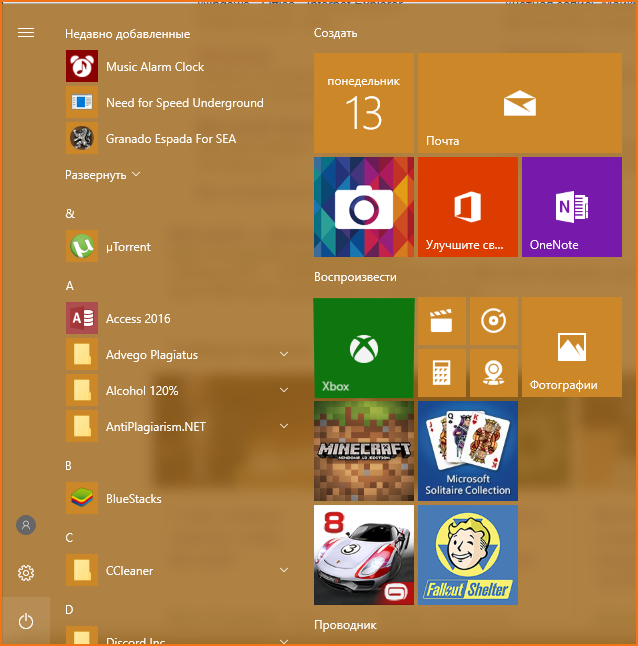
- application " Windows log» removed;
- missing widgets from Windows 7;
- standard games "Klondike", "Minesweeper", "Hearts" are replaced with updated versions;
- OneDrive from the Microsoft Store has been replaced with built-in OneDrive;
- IE browser replaced with Microsoft Edge;
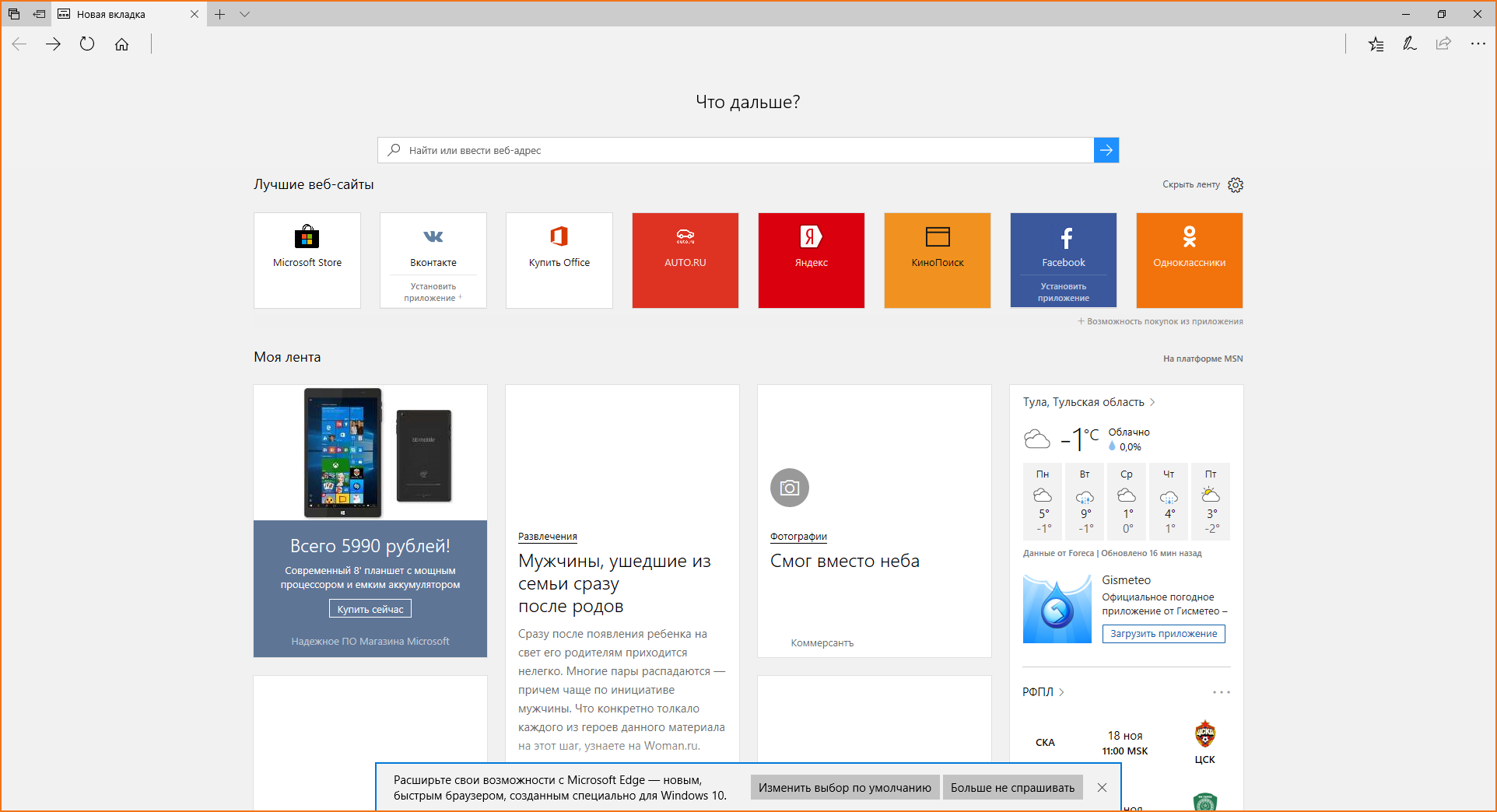
- updated "Security Center";
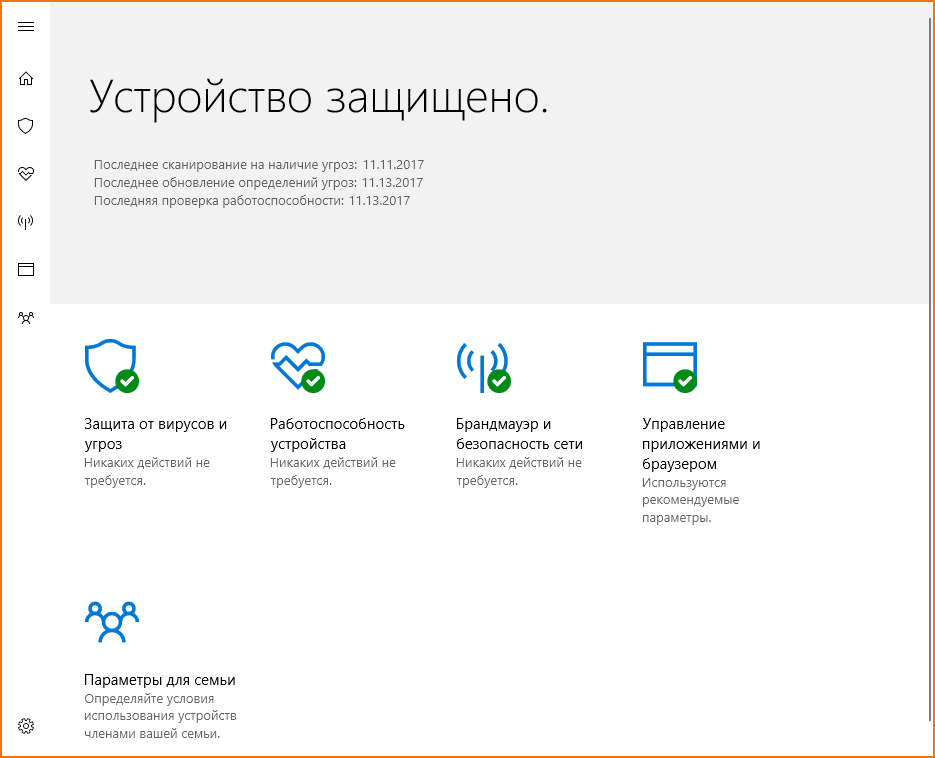
- built-in Skype application;
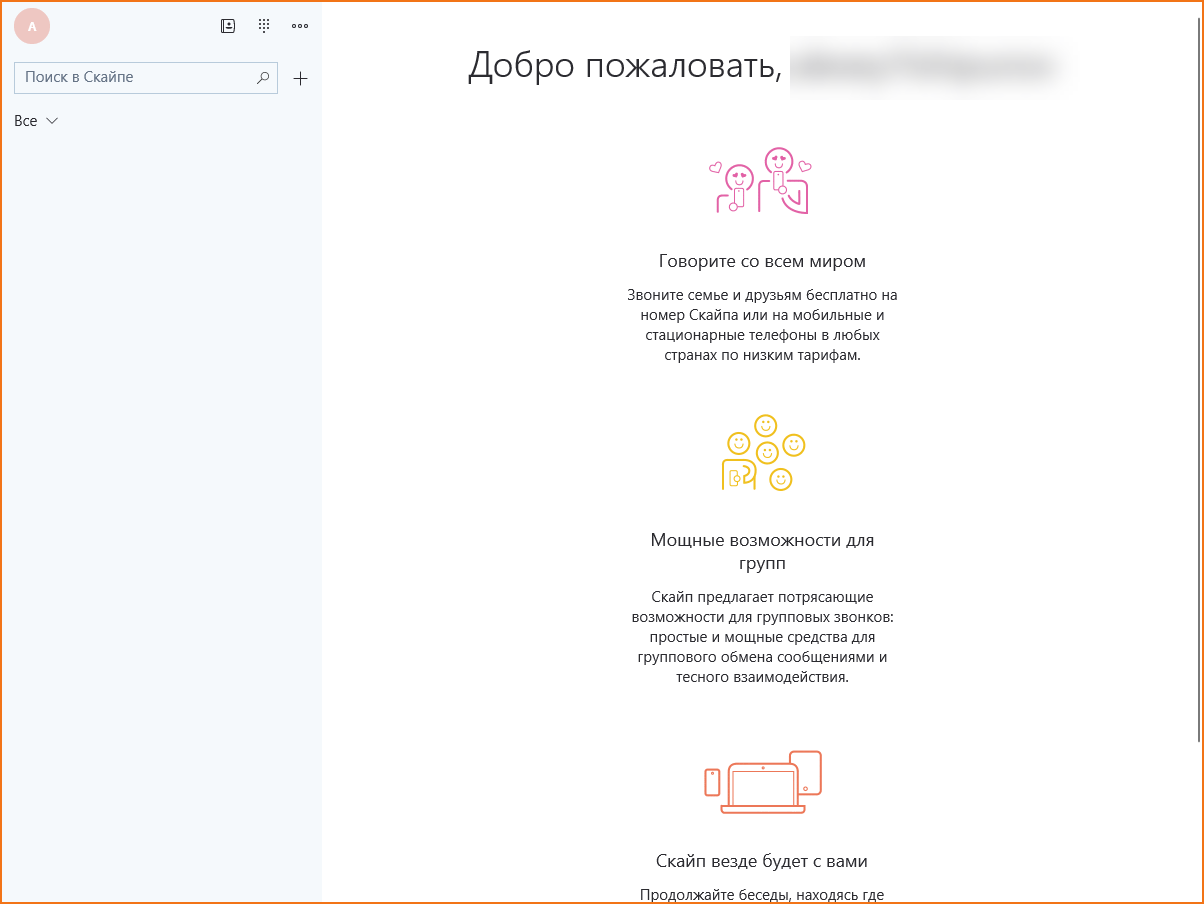
- updated Microsoft store store;

- added the function "Ask for help" (go to the online directory).

All other parameters and characteristics do not affect the daily use of the computer. Now you can decide if you need to upgrade to Windows 10.
Microsoft Support
The developers said that Windows 10 is last generation operating system. Now all OS updates will be cumulative, which allows not only to introduce new features, but also to refine old functions.
More useful information regarding the latest changes in Windows 10, its system requirements and can be found on Microsoft.com:
- Click the button

- Now open windows menu 10 and select one of the sections that interest you.
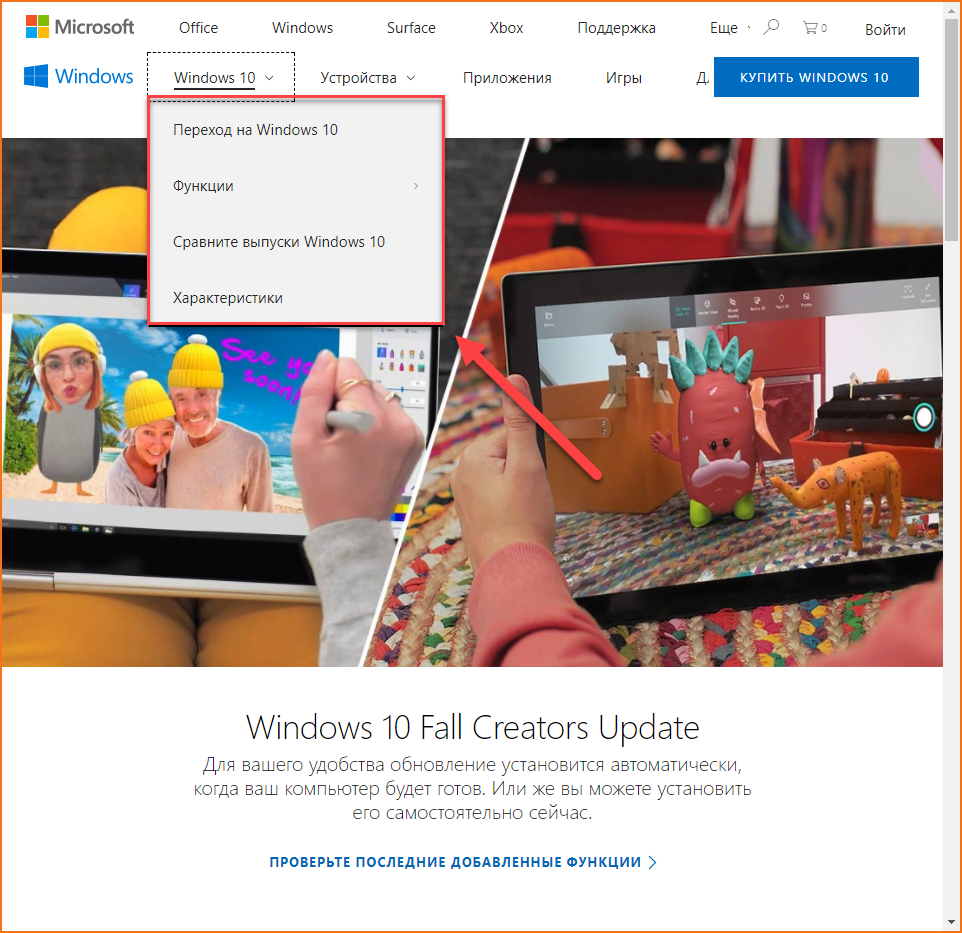
There you will find the maximum description of releases, builds and characteristics of all OS.
Video
To learn more about the system requirements and the differences between the "dozens" from previous generations of the operating Microsoft systems, check out the video.
Hello everyone, today I want to tell you about the system requirements of Windows 10.
Microsoft introduced new information on the following items: Windows 10 release date, minimum system requirements, system options, and update matrix. To all who are waiting for the release new version OS, this information might be helpful.
So, the very first point, the release date: July 29, Windows 10 will be available for purchase and upgrade in 190 countries, for computers and tablets. The upgrade for Windows 7 and Windows 8.1 users will be free. With information on the topic Reserve Windows 10, I think everyone has already read
Minimum hardware requirements
For desktop computers, the minimum system requirements are as follows - motherboard with UEFI 2.3.1 and Secure Boot enabled by default as the first criterion.
The requirements mentioned above are put forward primarily to suppliers of new computers with Windows 10, and the decision to provide the user with the opportunity to disable Secure Boot in UEFI is also made by the manufacturer (may prohibit, which will result in a headache for those who decide to install another system ). For old computers with a regular BIOS, I think there will be no restrictions on installing Windows 10 (but I can't vouch).
Other system requirements have not changed much compared to previous versions:
- 2 GB RAM for 64-bit system and 1 GB RAM for 32-bit.
- 16 GB of free space for 32-bit system and 20 GB for 64-bit.
- Graphics adapter (video card) with DirectX support
- Screen resolution 1024×600
- Processor with a clock frequency of 1 GHz.
As such, almost any system running Windows 8.1 is fine for installing Windows 10. In my experience, pre-release versions work relatively well on Windows 10. virtual machine with 2 GB of RAM (at least faster than 7).
Note: For advanced Windows 10 features, there are additional requirements - a speech recognition microphone, an infrared camera or fingerprint reader for Windows Hello, a Microsoft account for some features, and so on.
System versions, update matrix
Windows 10 for PC will be released in two main versions - Home or Consumer (Home) and Pro (professional). At the same time, the update for licensed Windows 7 and 8.1 will be carried out according to the following scheme:
- Windows 7 Starter, Home Basic, Home Premium - upgrade to Windows 10 Home.
- Windows 7 Professional and Ultimate - up to Windows 10 Pro.
- Windows 8.1 Core and Single Language (for one language) - up to Windows 10 Home.
- Windows 8.1 Pro - up to Windows 10 Pro.
Additionally, a corporate version of the new system will be released, as well as a special free version Windows 10 for devices like ATMs, medical devices, and more.
Also, as previously reported, users of pirated versions of Windows will also be able to get a free upgrade to Windows 10, however, they will not receive a license.
Additional official information about upgrading to Windows 10
In terms of compatibility with drivers and software when updating, Microsoft says the following:
- During the upgrade to Windows 10 antivirus program will be deleted while saving the settings, and when the update is completed, the latest version will be installed again. If the antivirus license has expired, Windows Defender will be activated.
- Some of your computer manufacturer's programs may be uninstalled before you upgrade.
- For individual programs, the Get Windows 10 app will report compatibility issues and offer to remove them from your computer.
Summing up, there is nothing particularly new in the system requirements of the new OS. And it will be possible to get acquainted with compatibility problems and not only very soon, less than two months left.
Microsoft published the list of minimum system requirements for Windows 10 a year ago. Same as recommended. The number of users of the new OS is growing, so it would be quite appropriate to recall this once again. Those who have already installed Windows 10 on their PC can compare their high expectations with the ordinary. The system requirements for Windows 10 for PC and laptop are slightly different from those for smartphones. We will also touch on this point.
On the one hand, the recommended technical parameters of a PC with Windows 10 installed on them should be approximately the same as for the 8th version of this OS. On the other hand, there are some nuances that do not allow referring the reader to similar materials for the G8.
For example, it is expected that Windows 10 will be installed only on machines equipped with an embedded crypto processor that supports latest technology Trusted Platform Module (TPM). Cryptographic protection devices under Windows control 10 will be given Special attention. So, let's take a look at the standard system requirements for a computer and laptop under Windows control tenth version.
Minimum for personal computers
To install Windows 10 on desktop computer or laptop the latter must meet the following system requirements:
- The amount of RAM >= 1 GB.
- Frequency CPU>= 1GHz.
- Hard disk size >= 16 GB.
The listed requirements apply to the 32-bit version of Windows 10. For x64, they will be different:
- The amount of RAM >= 2 GB.
- CPU frequency >= 1 GHz.
- Hard disk size >= 20 GB.
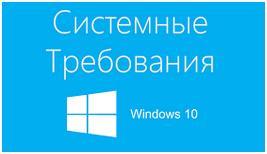 The requirements for the size of the monitor in Windows 10 are quite modest - for normal operation, a screen of 800 × 600 pixels is enough. The computer must support standard network interfaces such as Ethernet and / or Wi-Fi, and also have a sufficiently powerful video card with support for the latest DirectX versions, since this library is still the focus of attention for wine game developers. If we compare these figures with those required for the G8, we will not see any significant differences. But experienced users, especially those who have already installed Windows 10, recommend multiplying all system requirements by two. That's why they are minimal in order to differ from the real ones.
The requirements for the size of the monitor in Windows 10 are quite modest - for normal operation, a screen of 800 × 600 pixels is enough. The computer must support standard network interfaces such as Ethernet and / or Wi-Fi, and also have a sufficiently powerful video card with support for the latest DirectX versions, since this library is still the focus of attention for wine game developers. If we compare these figures with those required for the G8, we will not see any significant differences. But experienced users, especially those who have already installed Windows 10, recommend multiplying all system requirements by two. That's why they are minimal in order to differ from the real ones.
Minimum for smartphones
Hardware requirements for smartphones are even tougher. It is required, for example, that the screen resolution and the amount of RAM are in a certain ratio. Another, rather strange at first glance, wish concerns the size of the indent from the keypad to the screen and the outer edge of the device - it should be at least 4 mm.
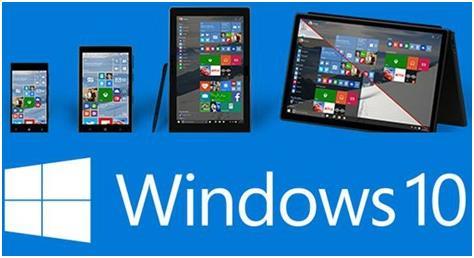 Let us dwell in more detail on the relationship between screen resolution and the amount of RAM. For devices with small screens and a resolution of about 800 x 480 pixels, it will be possible to get by with 512 MB of RAM. If you want to have a better picture, for example, with a resolution like 2560 x 2048 or more, then Windows 10 will require at least 4GB of RAM from you.
Let us dwell in more detail on the relationship between screen resolution and the amount of RAM. For devices with small screens and a resolution of about 800 x 480 pixels, it will be possible to get by with 512 MB of RAM. If you want to have a better picture, for example, with a resolution like 2560 x 2048 or more, then Windows 10 will require at least 4GB of RAM from you.
The upper limit of the diagonal length for smartphones running this OS is about 8 inches. These are the uncomplicated claims from Microsoft to the owners mobile devices. So, if you use a smartphone, then think ten times before choosing the top ten. Maybe it makes sense to do something simpler.
Processor and flash memory
Our further presentation also applies to mobile devices running Windows 10. Now we will touch on the minimum system requirements for this axis for the processor and flash memory.
The developers of the operating system stated that the "ten" can only be installed on processors of a certain model and quality. This causes frustration among the owners of not very high-quality equipment - after all, without Qualcomm and Intel processors on board, fantasize about installing Windows Mobile the latest version is meaningless. The Microsoft website lists all valid "stone" models - there are eighteen in total.
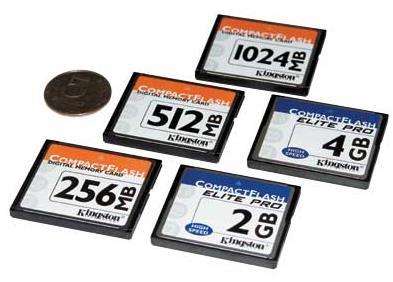 As for flash memory, it also has its own nuances and limitations. It is clear that the amount of such memory is limited from below by a non-weak value - it means that the flash memory on win mobile cannot be less than 4GB. The second condition is that 1GB must be reserved for the needs of the user and free. The storage performance requirements are as follows:
As for flash memory, it also has its own nuances and limitations. It is clear that the amount of such memory is limited from below by a non-weak value - it means that the flash memory on win mobile cannot be less than 4GB. The second condition is that 1GB must be reserved for the needs of the user and free. The storage performance requirements are as follows:
- IPOS >= 700 IOPS.
- The speed of sequential reading from the device is from 10 MB per second.
- For recording, the same parameter >= 6 MB per second.
But the presence or absence of a slot for an SD card has nothing to do with the possibility of installing win mobile - there is no such requirement. The Internet press claims that the original system parameters for "vin mobile" were expected to be even more stringent. So we can say we are lucky.
We remind you that the transition to the top ten previous versions: 7th and 8th - is free of charge if all the necessary service packs are installed in the system.
The publication of data on the required minimum hardware came out unexpectedly late - just a week before the new OS went on sale.
